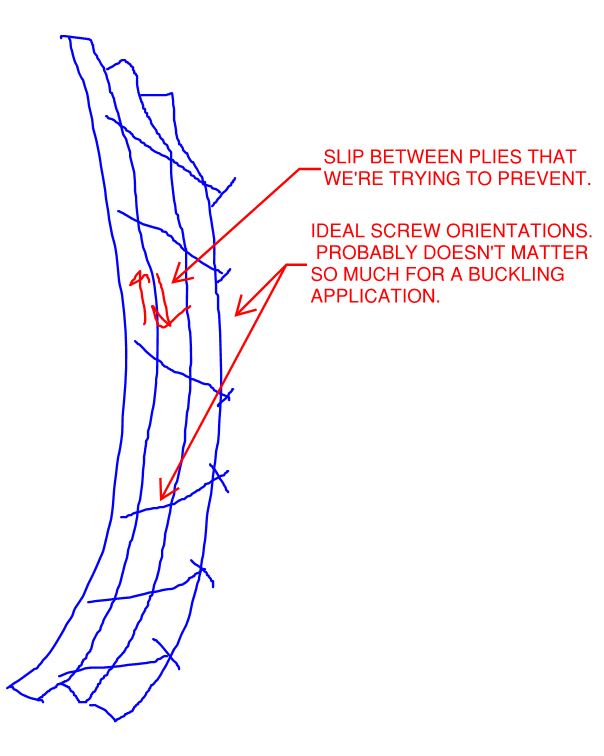Mike Mike said:
...this doesn't apply here since pdev's (1) 2x6 trimmer alone is sufficient and fastened to sheathing.
I get what you're saying and have made similar arguments in the past myself. That said, I feel that it should be mentioned that:
1) The jack studs actually rely on the king studs for their stability. So I don't believe that it is entirely correct to say that we don't have to worry about the king studs because the jack studs calculate out by themselves.
2) Fastening to sheathing only works for buckling if both exterior plies are fastened to the sheathing such that the plies in between are laterally contained. I'm not sure that can be assumed with conventional nailing patters.
3) Fastening to sheathing only works for load distribution if:
a) The nails, loaded in withdrawal, can resist the forces delivered and;
a) The sheathing, acting in bending and shear, can resist the forces delivered.
In both respects, I would expect demand to be much higher than that required for a typical field nailing condition. That, particularly given that the loads coming from the opening side are likley to be delivered as concentrated loads at the header and low sill.
This is all a bit pedantic, I admit, but real none the less.

